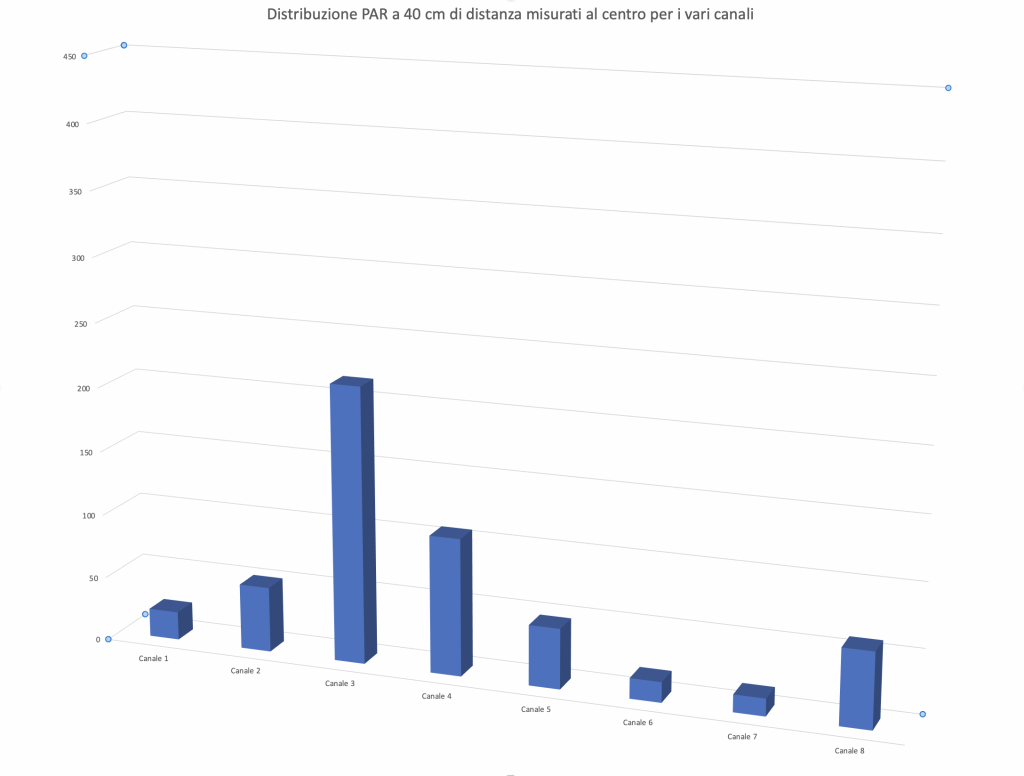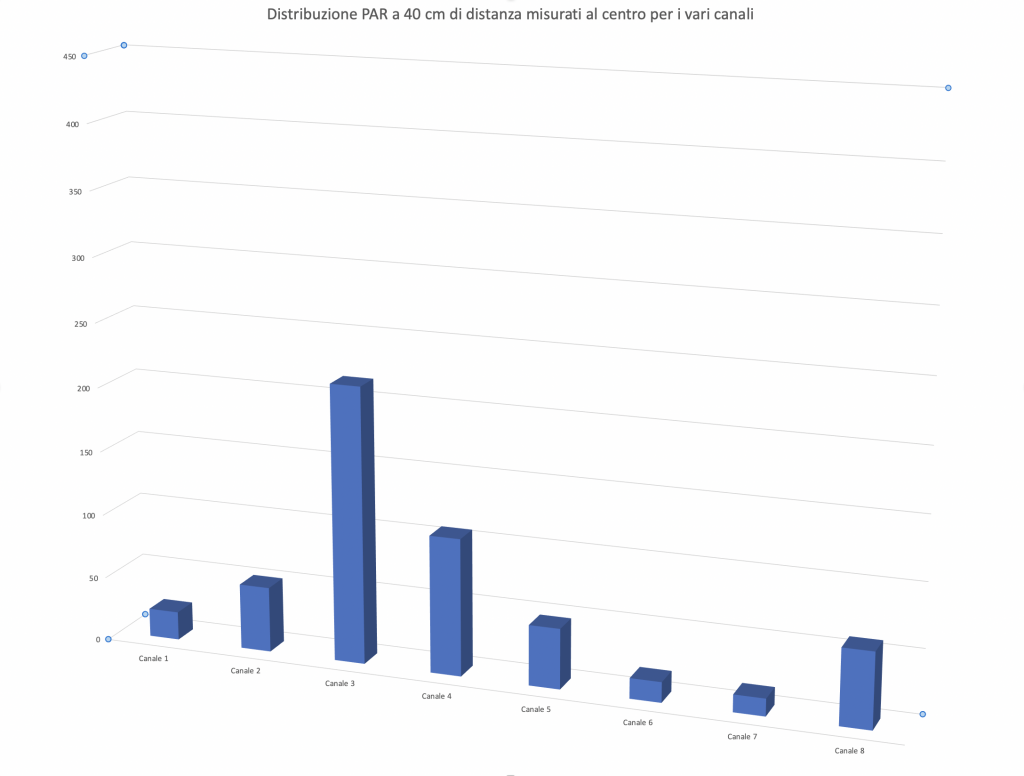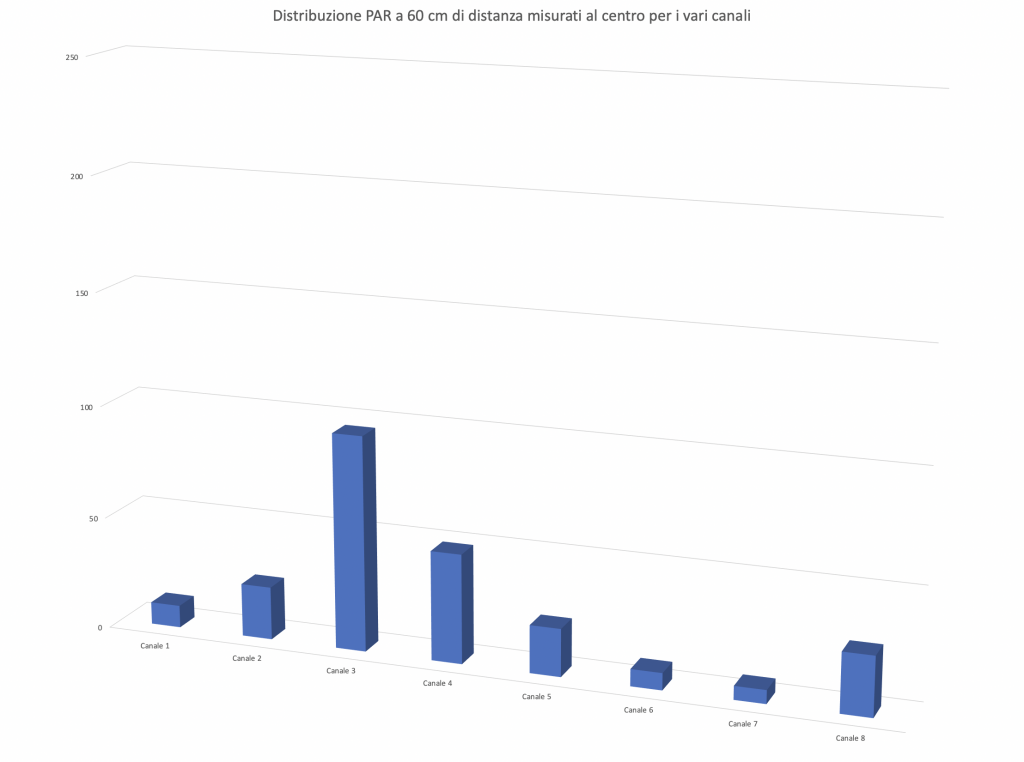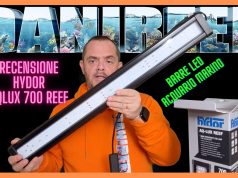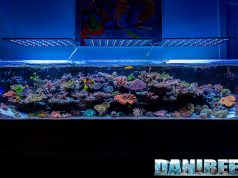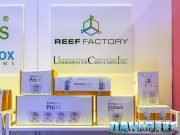Our new method DaniReef LAB for PAR measurement of the Ecotech Marine Radion XR30 G5 Blue
Antefact: (this paragraph is the same for each ceiling light measured with our DaniReef Lab for explaining the working method) During the long nights spent on our forum we always wondered how could we compare PAR from different ceiling lights. Even though we had the perfect device, the Quantum Meter MQ-510 di Apogee, we always referred only to the value measured at the centre at 20 cm of distance, more or less.
The Quantum Meter MQ-510 measures the PAR, expressed in PFFD that is photosynthetic photon flux density in μmol m-2 s-1. This device is calibrated to work underwater, so if it’s in air the measured value has to be divided by 1,32 that’s the dive factor. We have to do the conversion. The values you’re going to see are correct.

We decided to make a square base of 70×70 cm, we set 17 fiducial points where we placed the sensor Quantum Meter MQ-510 and we also made 3 lifts of 20, 40 and 60 cm for the ceiling light, in order to have the same distance from the sensor. This will allow us to create the curves which can be compared to other ceiling lights’s, all tested at the same distances. Notice that this distance is measured between the base of the sensor and the ceiling light. In reality it should be decreased of 3,5 cm that is the height of the measurement cylinder and increased by 0,5 cm that’s the dimension of the spacers that lift the ceiling light.

In total the three measurements are made from 17, 37 and 57 cm of distance. Because they’ve been done in air they will be corrected.
PAR measurement from 17 cm of distance
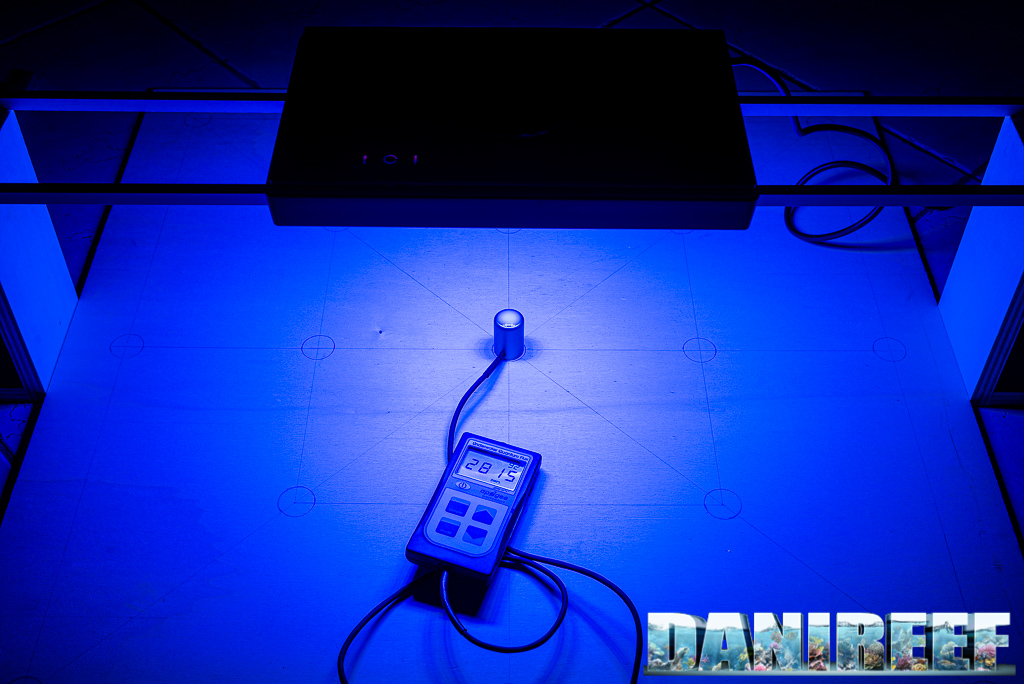
The ceiling light has been placed at 17 cm from the board. The points not indicated on the panel have been estimated in the following chart.
Here the collected values:
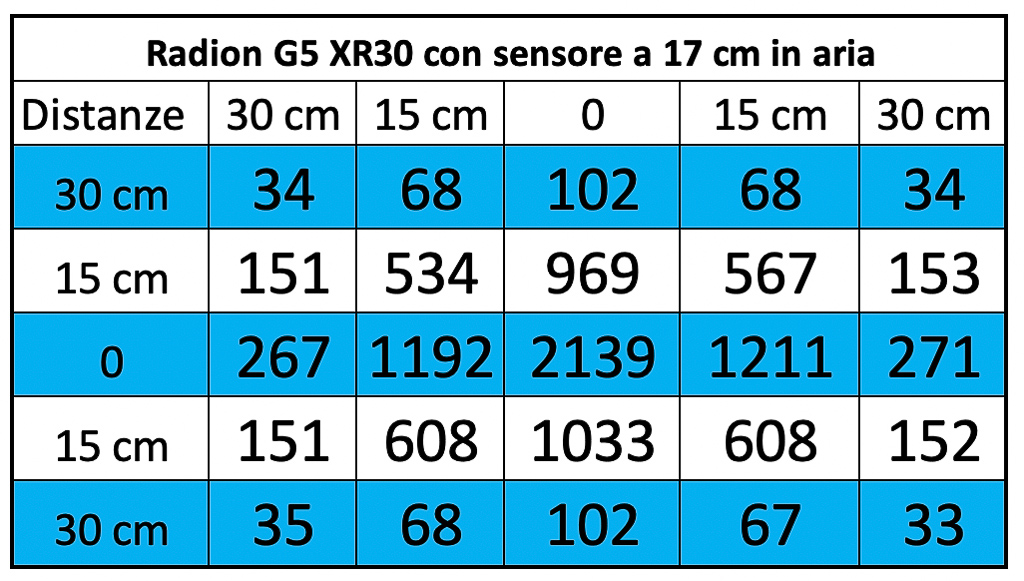
And this is the corresponding chart, we came back to the classic scale in order to compare similar ceiling lights.
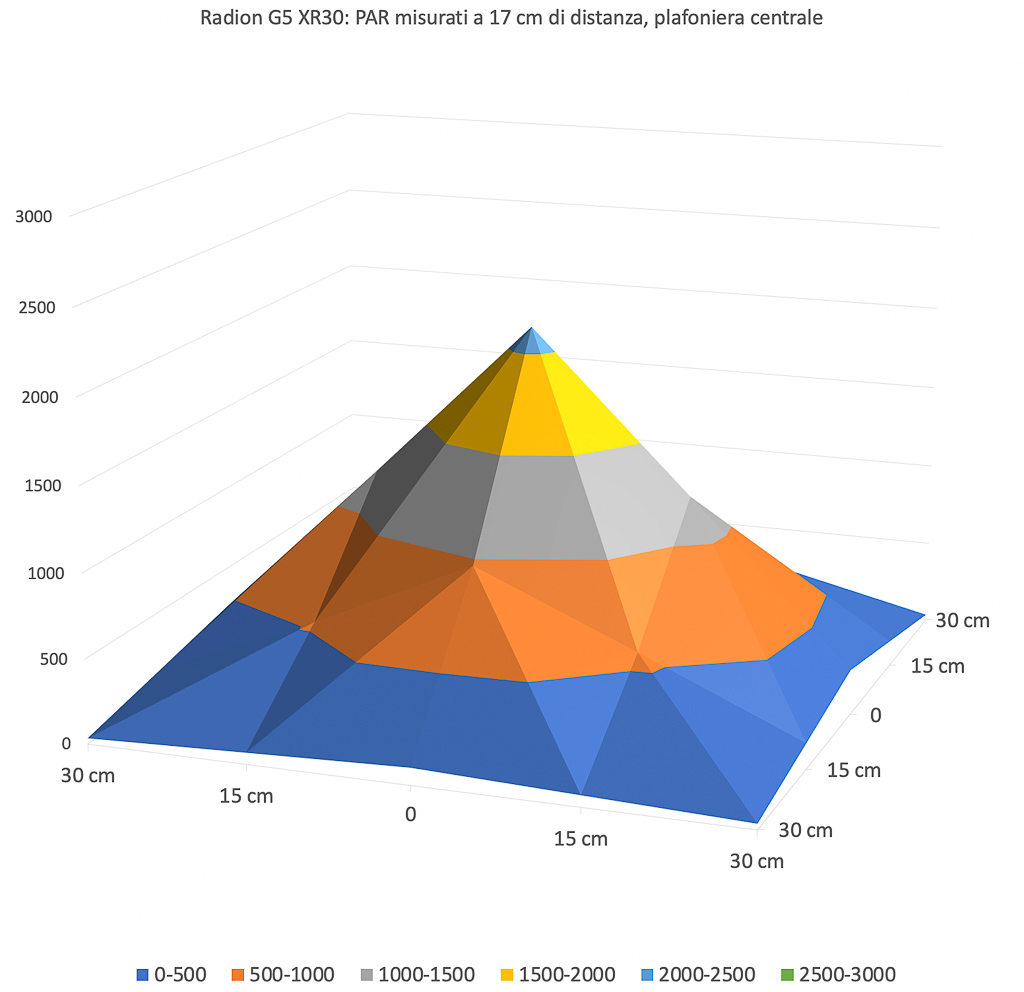
The first measure considers a small distance between the ceiling light and the sensor. Now the ceiling light has a very diffused light, but the central value is very high and the difference center/sides at this distance is significant. The middle values are good. Remember that the ceiling light measures 30×18 cm while our area is 60×60 cm.
PAR measurement from 37 cm of distance
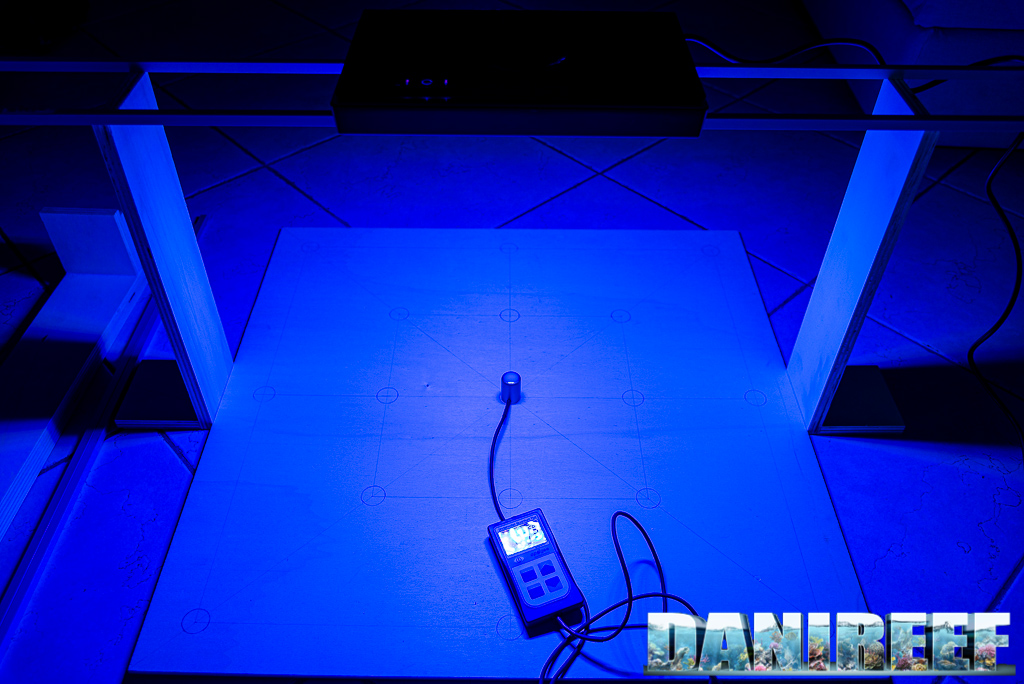
In this step we adopted a distance of 37 cm.
Here the collected values:
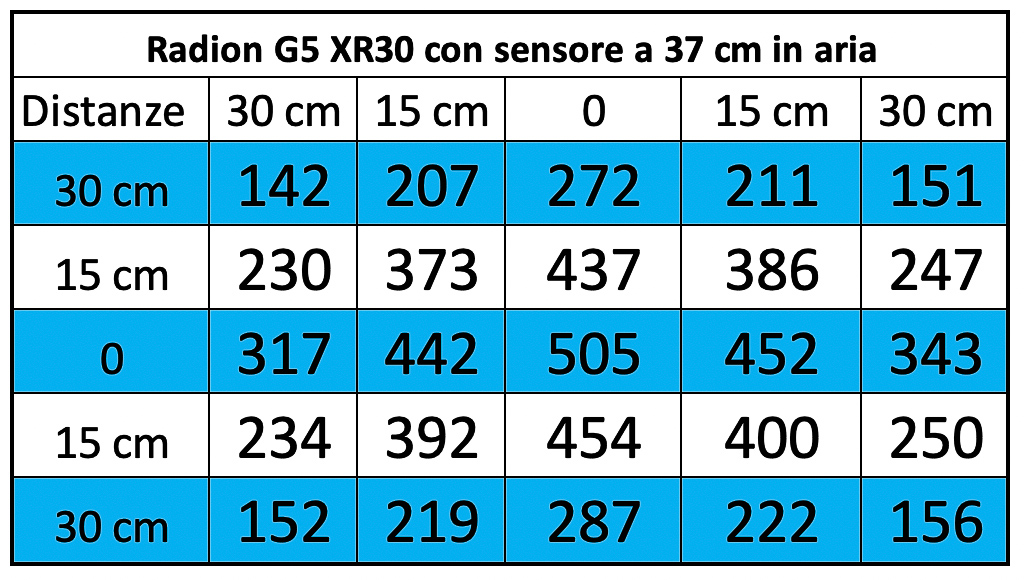
And the corresponding chart:
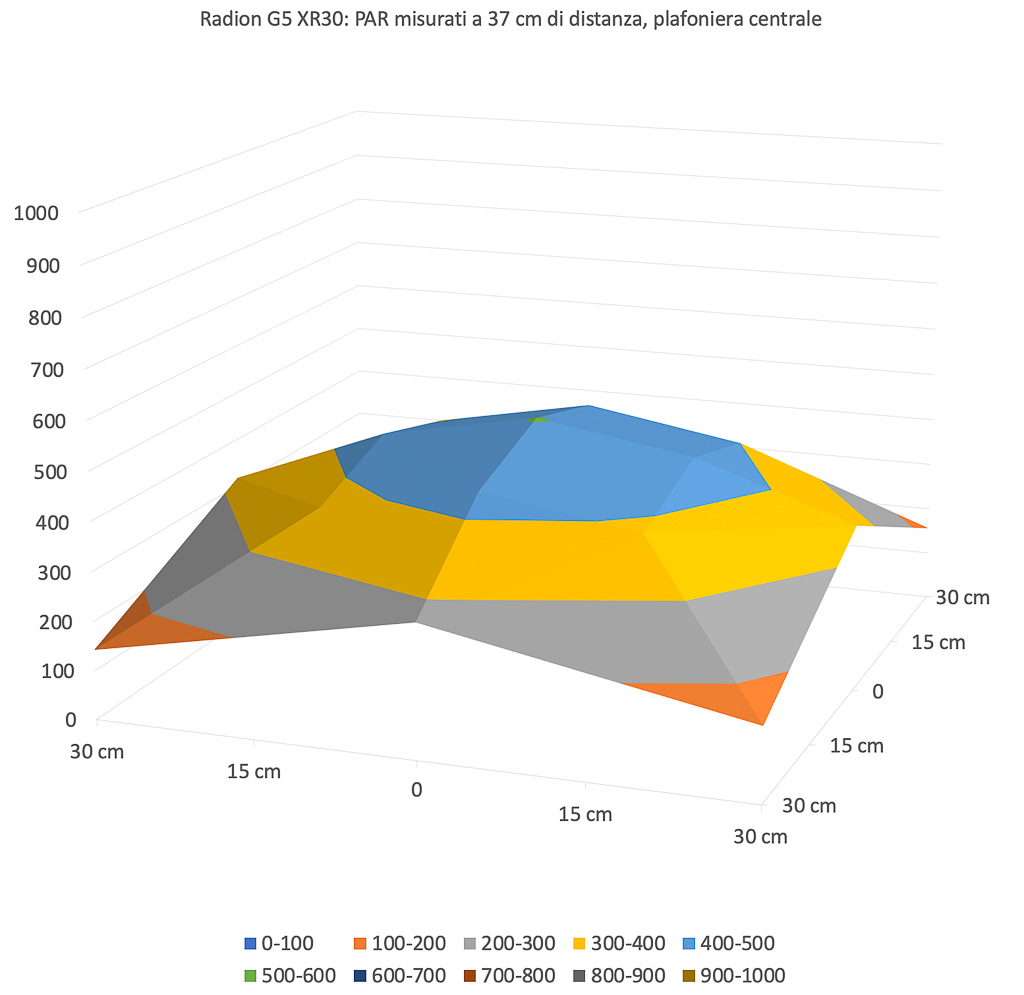
Increasing the space between sensor and ceiling light, the curve is even more complete. The value center/sides is very similar. The value in the middle decreases from 2139 to 505 μmol m-2 s-1.
PAR measurement from 57 cm of distance
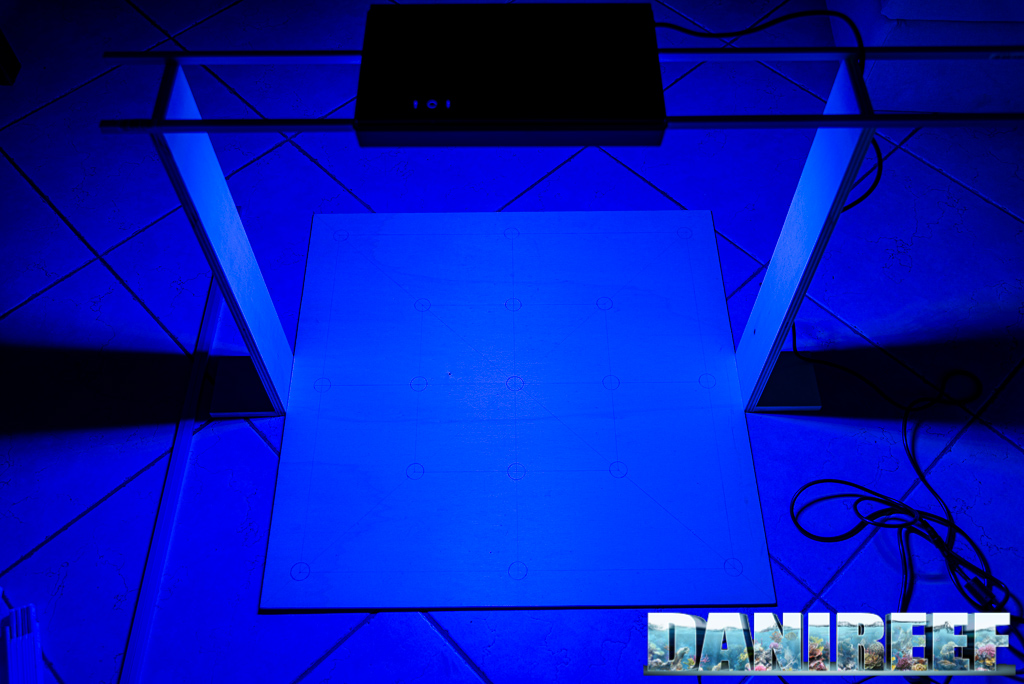
At the end we adopted the distance of 57 cm.
Here the collected values:
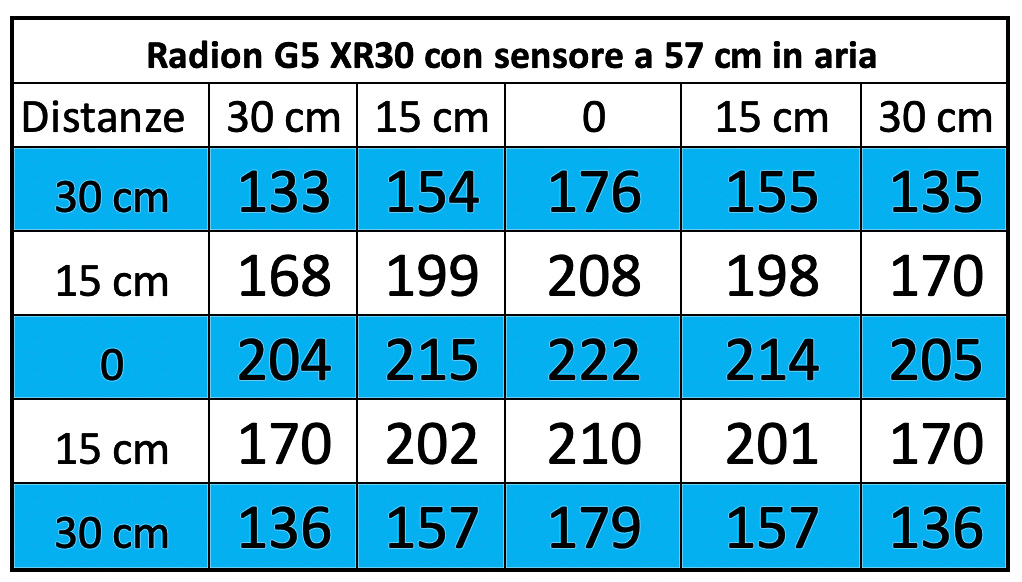
And the corresponding chart:
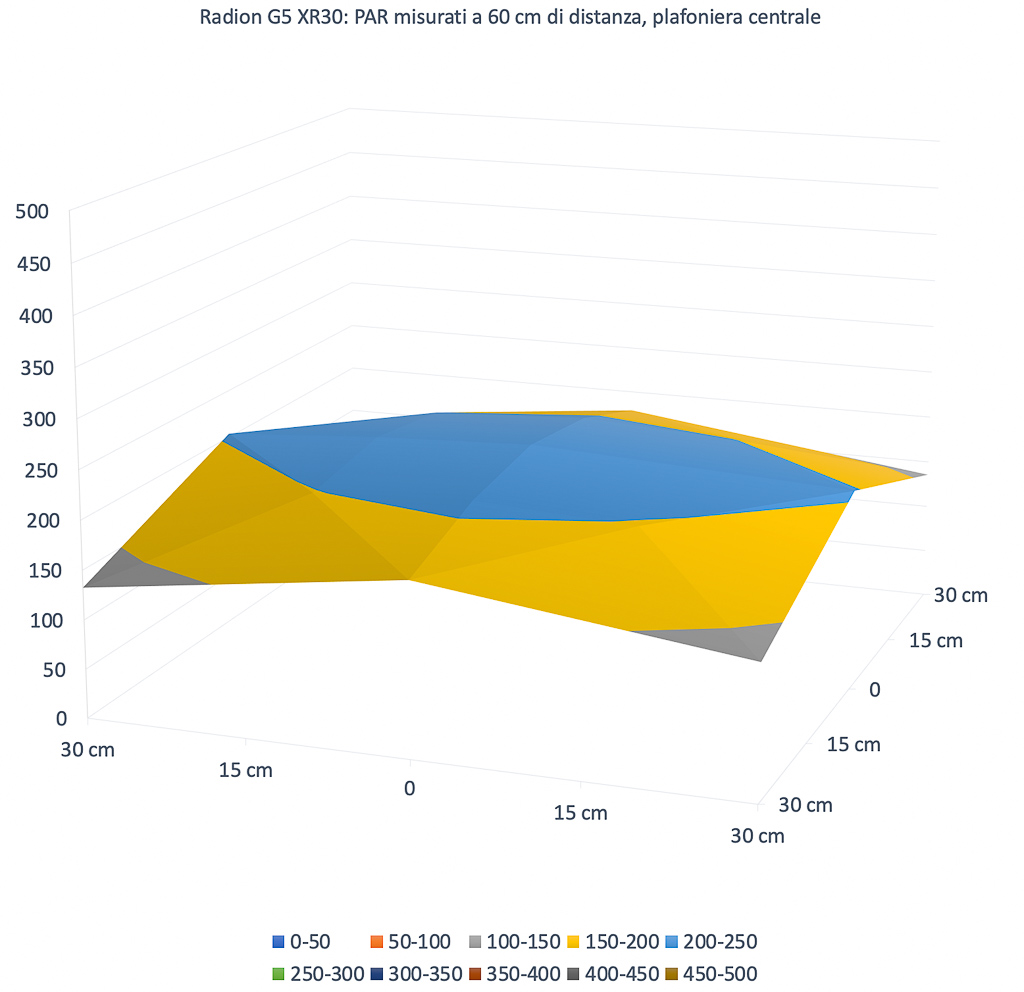
With a bigger space between ceiling lights and sensor the difference between PAR in the middle and on the sides decreases even more. We’re almost at the perfection of the diffusion. The curve is almost flat. We have a higher uniformity but less power in total, as we expected. The light spreads, but the value in the middle decreases from 2139 to 505 to 222 μmol m-2 s-1.
It stands out that the coverage is so uniform as we’ve never seen before.
The PAR in the middle in the different configurations
Let’s continue with our technical measurements. We can see how, in a chart, the PAR collected in the middle decrease in the three different distances of the tests.
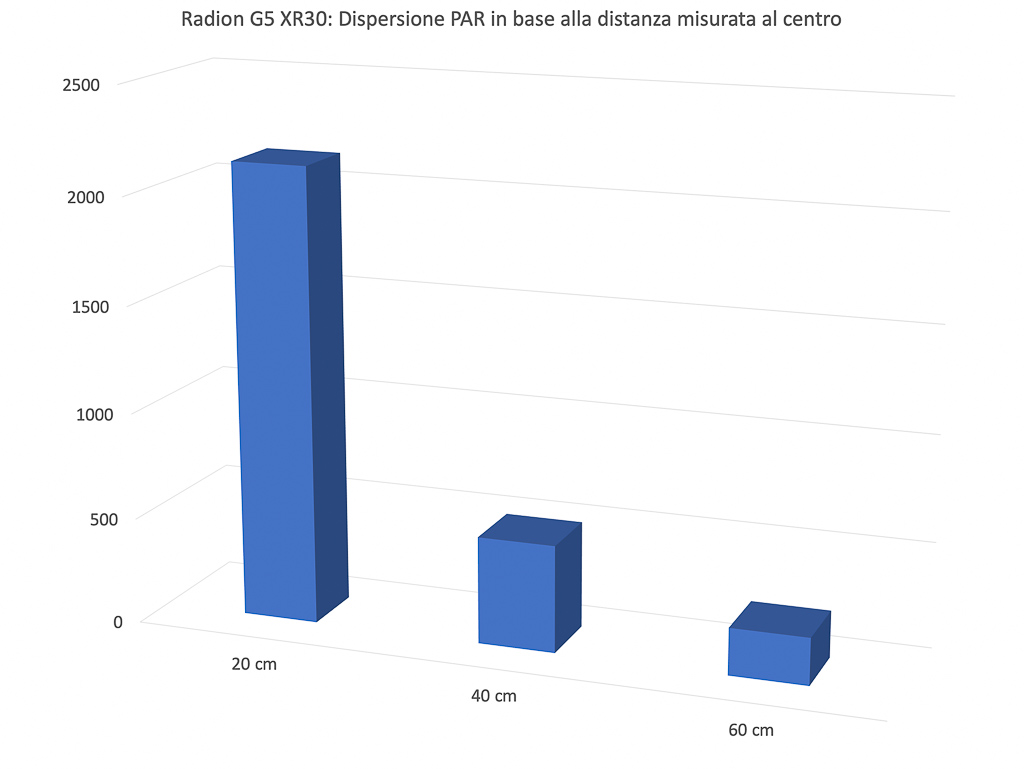
Energy variation of the Ecotech Marine Radion XR30 G5 Blue depending on the distances
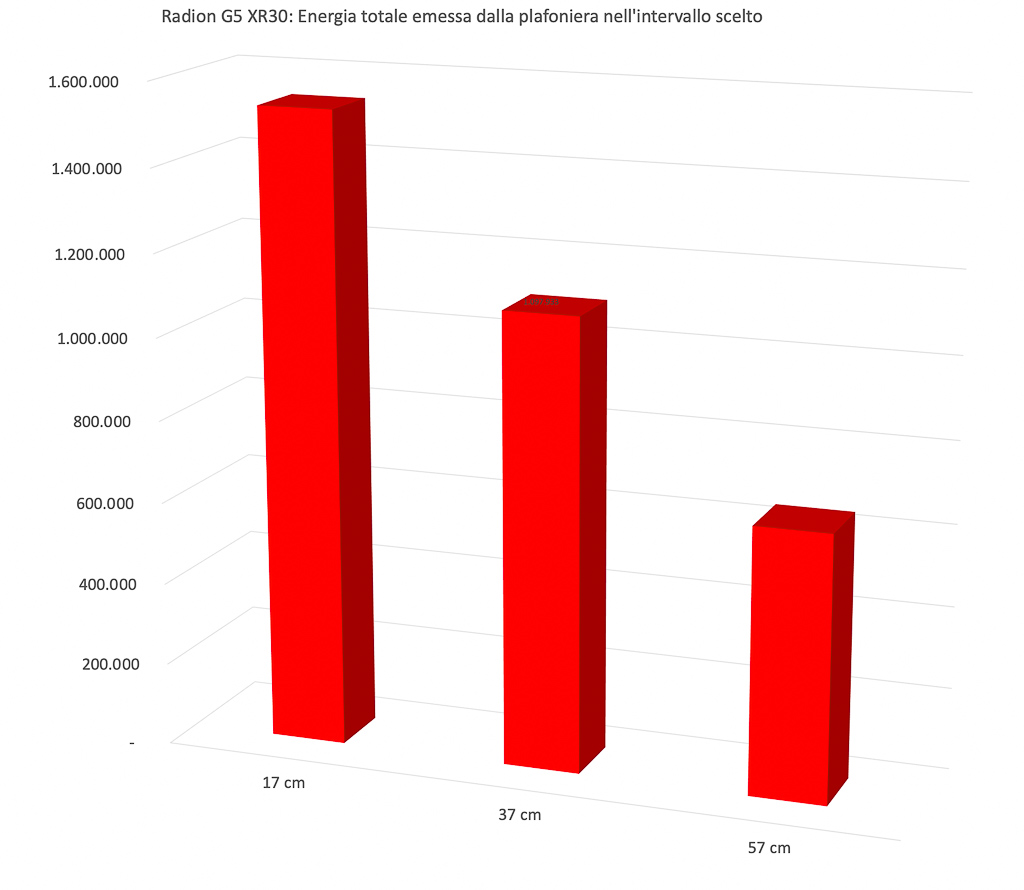
This is the most significant and most comparable data. The energy variation. We calculated the volumes of the three surfaces previously seen. It’s obvious that moving away from the ceiling light PAR decreases, also because the light illuminates a wider space. We try to consider all the light energy in this square of 60 cm under the light. And it’s visible that the three values of 1.535.561, 1.094.933 and 647.940 assume a different connotation compareed to the values in the middle. When the first ones are low because the distance is high, the subtended area, that is the energy, decreases less, because the “main part” of the lighting is in the middle. This is the theory.
For once the values on the sides decrease from 37 and 57: this means that the ceiling light spreads the light a lot.
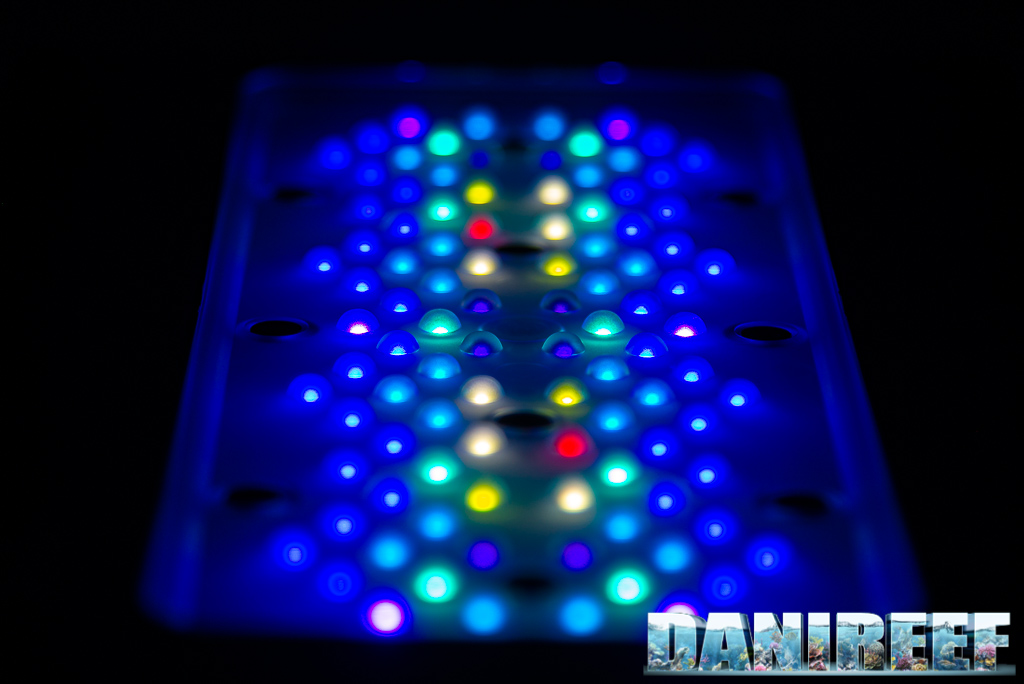
Value in the middle for each channel at three distances
We also measured the value in the middle of each channel in order to give you an idea of the contribute of each channel to the PAR.
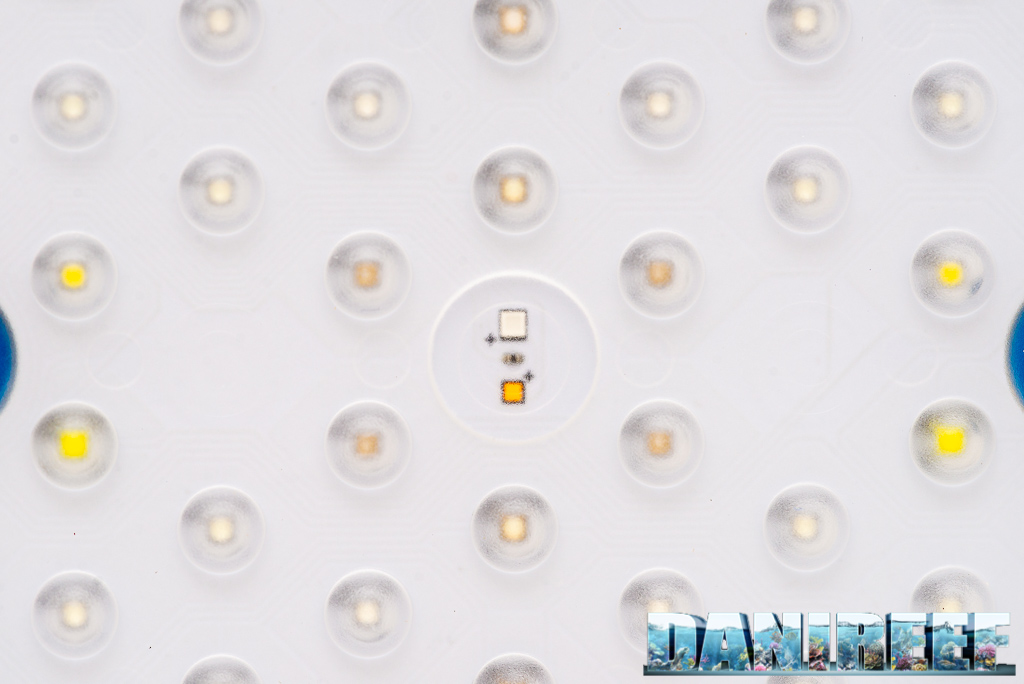
Here the collected values:
| Distance = 17 cm | Distance = 37 cm | Distance = 57 cm | |
| Channel 1 UV | 91 μmol m-2 s-1 | 22 μmol m-2 s-1 | 10 μmol m-2 s-1 |
| Channel 2 Purple | 192 μmol m-2 s-1 | 51 μmol m-2 s-1 | 23 μmol m-2 s-1 |
| Channel 3 Royal Blue | 908 μmol m-2 s-1 | 215 μmol m-2 s-1 | 95 μmol m-2 s-1 |
| Channel 4 Blue | 445 μmol m-2 s-1 | 107 μmol m-2 s-1 | 48 μmol m-2 s-1 |
| Channel 5 Cyan | 186 μmol m-2 s-1 | 47 μmol m-2 s-1 | 21 μmol m-2 s-1 |
| Channel 6 Lime | 64 μmol m-2 s-1 | 16 μmol m-2 s-1 | 8 μmol m-2 s-1 |
| Channel 7 Red | 52 μmol m-2 s-1 | 14 μmol m-2 s-1 | 6 μmol m-2 s-1 |
| Channel 8 Cold White | 241 μmol m-2 s-1 | 59 μmol m-2 s-1 | 27 μmol m-2 s-1 |
The channels are obviously very different from each other, with Royal Blue, Blue and Cold White that have the main part. As expected, given the name of the ceiling light. The contribution of Lime, Red and UV is very low, the same channel that aquarists usually decrease. But given their rather low addition in PAr and watt I don’t think in this case they gave to be decreased again.
Consumption
The measurement of the consumption was made possible thanks to the useful device RCE PM600 that can also measure the Cos(fi) (or power factor). The result is already given in watt.
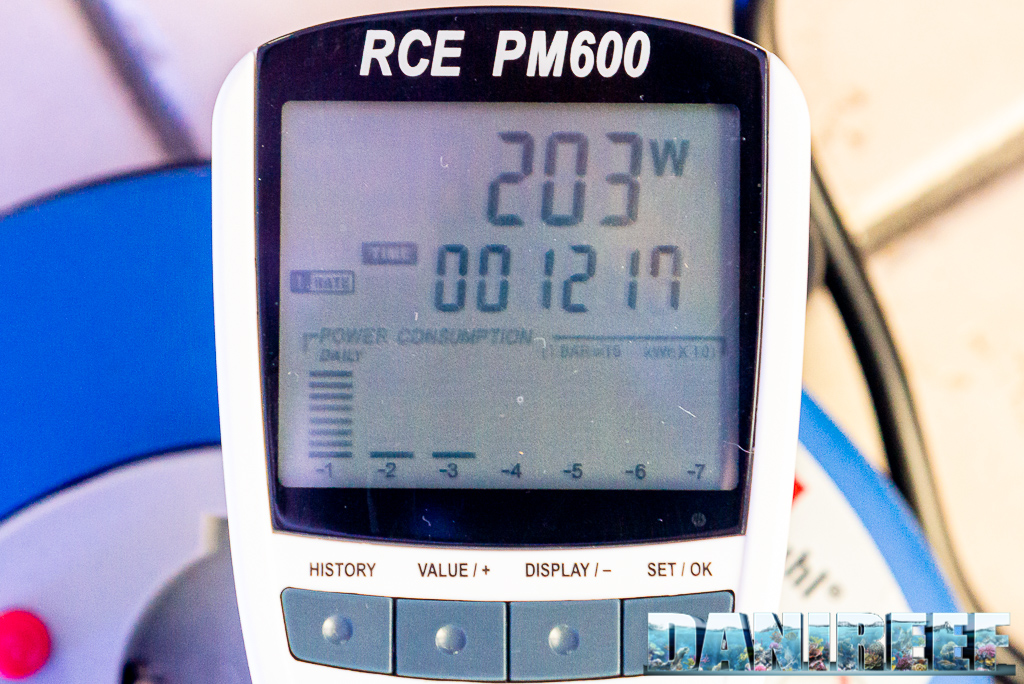
Here above there’s the maximum power and below the Cos(fi).
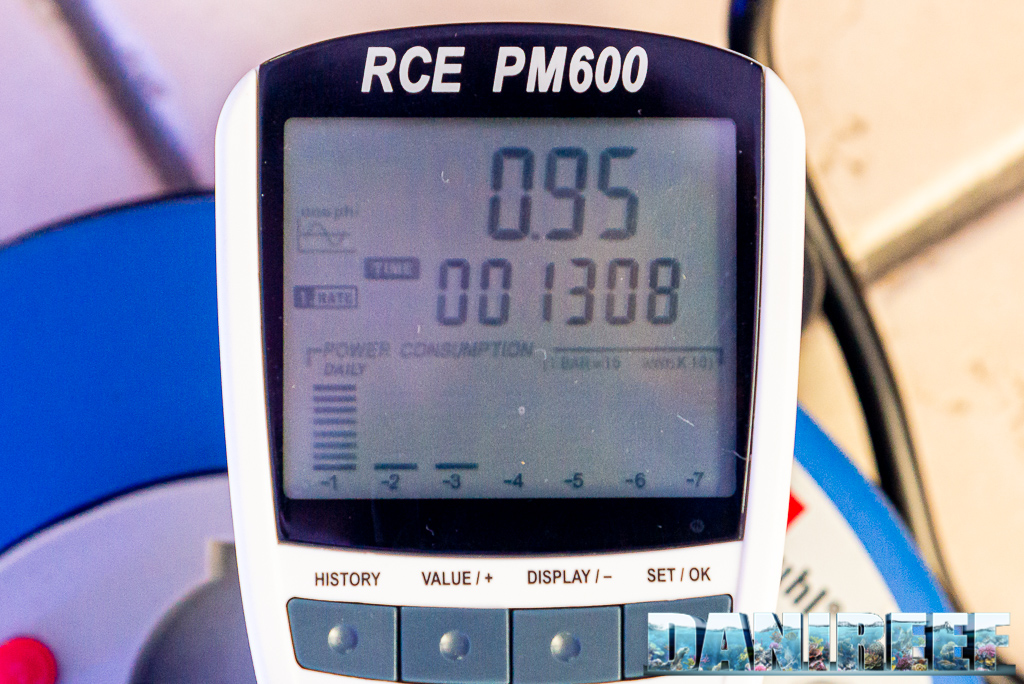
The ceiling light Ecotech Marine Radion XR30 G5 Blue consumes 203 watt. Considering that at 17 cm the ceiling light has 2139 μmol m-2 s-1 in the middle, we can say it will have a peak value of 10,54 μmol m-2 s-1 w-1 (PAR per watt).
The electric consumption is the almost the same of the declared one. 203 watt against 205. The loss is less that 1%.
Ecotech Marine Radion XR30 G5 and heat
The Ecotech Marine have an active chilling system. It has a vent that can be quite noisy and that adjusts on the temperature of the LED. This is way the ceiling light keeps its efficiency at its highest even at the maximum power. Now the vent doesn’t suck the humid air at the bottom, that was the air coming from the aquarium, but it’s placed on top. Great improvement.
Let’s continue on page three with the costs, the comparison with other ceiling lights and our final comment.






